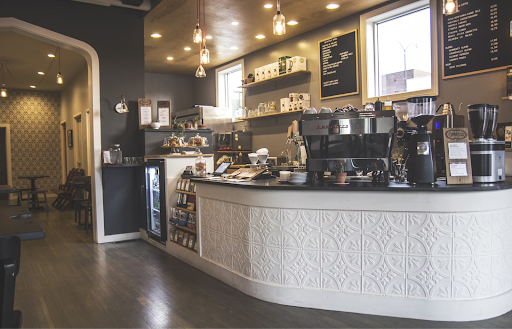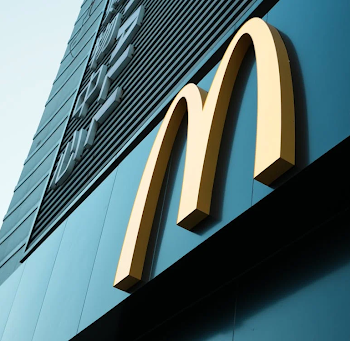
How can you increase your food and beverage business revenues for 2025?
The necessity to optimize profit margins reaches unprecedented importance as global food and beverage revenue is expected to reach $8.9 trillion by 2026 and U.S. market sales are projected to hit $863.95 billion in 2025.
The truth is…
Most F&B companies struggle with the same challenges: rising costs, supplier headaches, and economic uncertainty. Successful businesses have discovered precise methods for increasing their profit margins while maintaining quality standards.
This complete guide will explain the top strategies you can use to increase your food and beverage profit margins even amid today’s market difficulties.
Let’s jump in!
Key Takeaways:
- Understanding Current F&B Market Dynamics
- Smart Packaging Decisions and Cost Management
- Pricing Strategies That Actually Work
- Supply Chain Optimization Techniques
- Technology Integration for Better Margins
Understanding the Current F&B Market Landscape
Gaining insights into current food and beverage industry trends should come first before exploring precise strategies.
Industry surveys show that 68% of U.S. food and beverage enterprises experienced revenue growth during 2024 with an average increase of 20%. Meanwhile, 56% saw improved profitability.
Here’s what’s driving these changes:
- Post-pandemic consumer behavior shifts
- Supply chain disruptions and adaptations
- Inflation and cost pressures
- Technology adoption acceleration
The leading businesses today don’t merely respond to market changes but they strategically position themselves to take advantage of these changes.
Smart Packaging Decisions That Impact Your Bottom Line
Many companies fail to realize that their choice of packaging plays a crucial role in enhancing profit margins. Companies can achieve both cost reductions and enhanced product attractiveness through strategic packaging choices.
Consider this: Packaging serves as more than a simple container because it contributes to your product’s user experience and enhances brand identity. The 16 oz round spice container has gained popularity within specialty food markets because it offers versatile features that attract consumers. The 16 oz PET bottles display products clearly and bring substantial cost savings relative to glass bottles.
Benefits of optimal packaging selection include:
- Reduced shipping costs due to lighter materials
- Lower breakage rates during transport
- Extended shelf life for products
- Improved consumer experience
- More efficient storage utilization
Food and beverage companies today deploy packaging audits to discover cost-saving potentials while maintaining their quality standards and brand image.
Pricing Strategies That Protect and Enhance Margins
The necessity for F&B executives to master pricing strategies grew as 85% of companies increased prices in 2024 while 46% implemented 3–6% hikes to manage rising costs.
Here’s what works:
Value-Based Pricing
Successful businesses currently move towards value-based pricing strategies instead of setting prices just by calculating costs. This approach considers:
- The perceived value to customers
- Competitive positioning
- Product differentiation factors
Dynamic Pricing Models
Dynamic pricing which employs AI to modify prices according to real-time demand and competitive factors now serves as an essential tool for maintaining profitability in unstable markets.
This approach allows you to:
- Capitalize on high-demand periods
- Adjust to competitive pressures in real-time
- Conduct price elasticity tests to identify the best pricing levels
Optimizing Your Supply Chain for Maximum Efficiency
Supply chain optimization has become vital as 42% of businesses identify inflation and supplier management as their primary challenges.
The most effective strategies include:
Supplier Consolidation and Negotiation
A focused partnership with key suppliers enables businesses to receive volume discounts and simplified logistics operations.
- Volume discounts
- Simplified logistics
- Better payment terms
Inventory Management Refinement
Extra inventory locks capital and boosts storage expenses while inadequate inventory causes missed sales and stock shortages.
Modern inventory management approaches focus on:
- Just-in-time delivery systems
- Demand forecasting using AI
- Safety stock optimization
Technology Integration for Margin Improvement
As 83% of F&B executives commit to increased capital investment for production expansion and technology improvements digital transformation emerges as a primary driver of profitability.
The highest ROI typically comes from:
AI-Driven Analytics
The power of AI-driven analytics transforms demand forecasting alongside waste reduction and hyper-personalized pricing capabilities.
These tools allow for:
- More accurate production planning
- Reduced spoilage and waste
- Optimized pricing strategies
Automation Technologies
Strategic automation allows companies to achieve substantial labor cost reductions and enhanced production consistency.
- Production line automation
- Packaging automation
- Warehouse management systems
Consumer Trends Worth Investing In
The demand for products is now being transformed by consumer preferences that prioritize health and sustainability which forces supply chains to become agile to sustain profitability.
The most promising areas for investment include:
Plant-Based and Alternative Proteins
The plant-based and alternative protein sector experiences swift growth while delivering superior profit margins and attracting broader customer groups.
- Plant-based meat alternatives
- Dairy alternatives
- Novel protein sources
- Hybrid products (part conventional, part alternative)
Functional Foods and Beverages
Products that offer specific health benefits can be priced higher than regular products.
- Immunity-boosting ingredients
- Cognitive enhancement
- Energy optimization
- Gut health support
Sales growth predictions for 2025 show these segments will increase by 2.0% to 4.0% due to price/mix adjustments between 1.5% and 3.5% along with maintained consumer demand for home consumption.
The Bottom Line: Your Profit Margin Action Plan
A strategic approach with multiple components is essential to maximize profit margins in the food and beverage industry by balancing current cost pressures against future growth potential.
The most successful companies are:
- Executives who choose effective packaging options such as 16 oz PET bottles demonstrate smart packaging decisions.
- Implementing sophisticated pricing strategies
- Optimizing their supply chains
- Leveraging technology for efficiency gains
These strategic focuses allow your business to join the ranks of the 87% of food and beverage executives who anticipate revenue growth by 2025.
Margin improvement needs continuous evaluation and innovative strategy adjustments rather than being treated as a single project. Identify the business segments with the fastest return potential and then methodically work through each improvement possibility.
Frequently Asked Questions
What are typical profit margins in the food and beverage industry?
The average profit margins for restaurants range between 3–5%, whereas packaged food and beverage products achieve margins from 10-25% based on factors like category type, brand power and distribution methods.
How are F&B companies handling inflation in 2025?
Industry surveys show that 85% of F&B companies implemented price increases in 2024 and 46% of these companies raised their prices by between 3% and 6%. A number of businesses are adopting cost-cutting strategies together with formula improvements and portion control measures.
What technology investments deliver the best ROI for F&B companies?
AI analytics tools for demand prediction and pricing refinement alongside production automation systems and supply chain tracking technology generate the highest returns for businesses.
How important is packaging in profit margin optimization?
The cost of packaging materials and shipping weight along with product protection and shelf life extension can create significant effects on profit margins. The selection of strategic packaging options such as lightweight 16 oz round spice containers helps decrease supply chain expenses.



